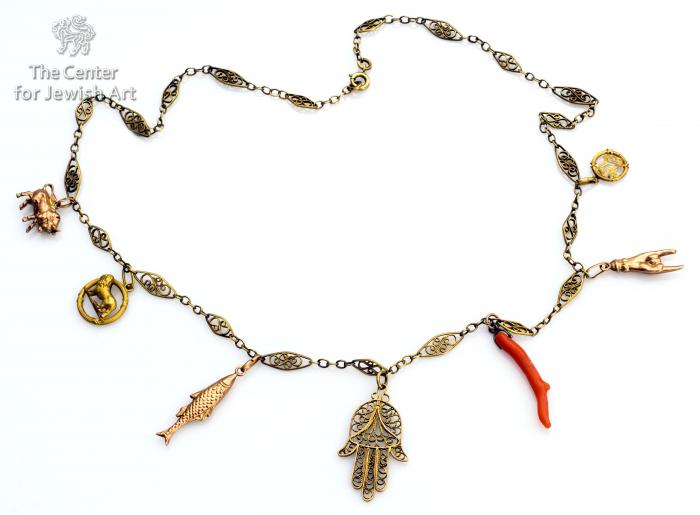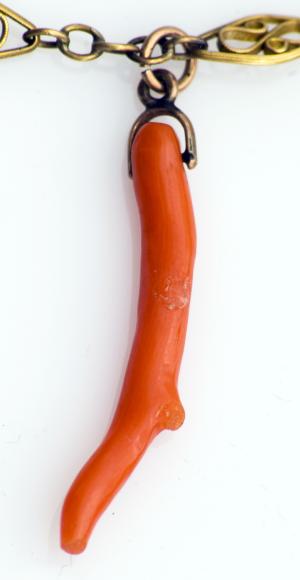Obj. ID: 36908
Sacred and Ritual Objects Amulet, Djerba, circa 1940

The following description was prepared by William Gross:
From earliest times, man has tried to protect himself from misfortune by the use of objects which he considered holy or otherwise (e.g., magically) potent. Amulets and talismans are items generally worn around the neck or wrist, carried in a pocket or purse or hung on a wall. They are meant to protect or aid those who carried or wore them. The Hebrew word for amulet, kame‘a, has the root meaning "to bind". Jewish amulets are usually comprised of texts (either letters or graphic symbols) that are inscribed on some sort of material; some may also contain plant matter or precious stones. The texts of amulets usually include holy names that are believed to have the ability to affect reality, along with incantations summoning angels or other magical powers. For the most part, an amulet has a specific purpose: to ease childbirth, facilitate recovery from illness, improve one’s livelihood, and so on, but in the modern world many are also made for general protection.
The Jewish goldsmiths of Djerba have traditionally made jewelry on that island and some of them work until today. This amuletic neckalce carries a number of protective elements, such as the "hand in the eye", the red coral, the fish, the lion and bull and the number 13, but the center is the gold filigree hamsa. A hamsa is an amulet shaped like a hand, It is thought to protect against the “evil eye” and is a popular motif in both Jewish and Middle Eastern jewelry..










